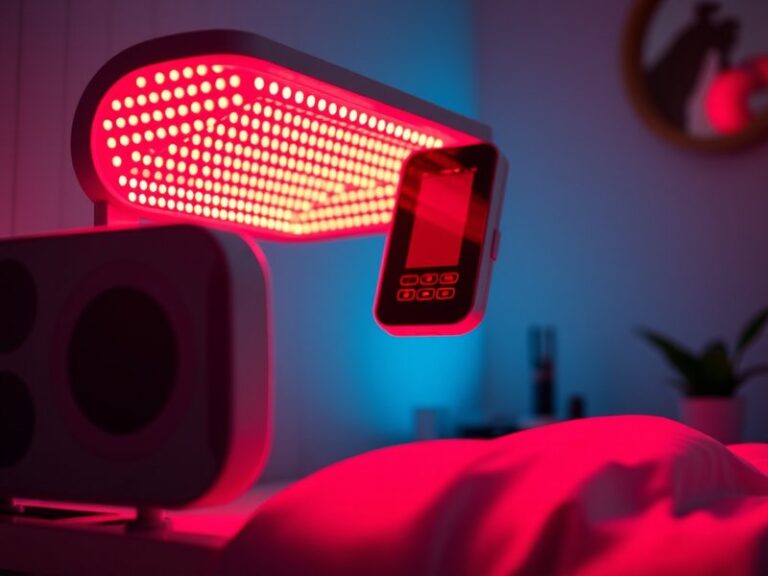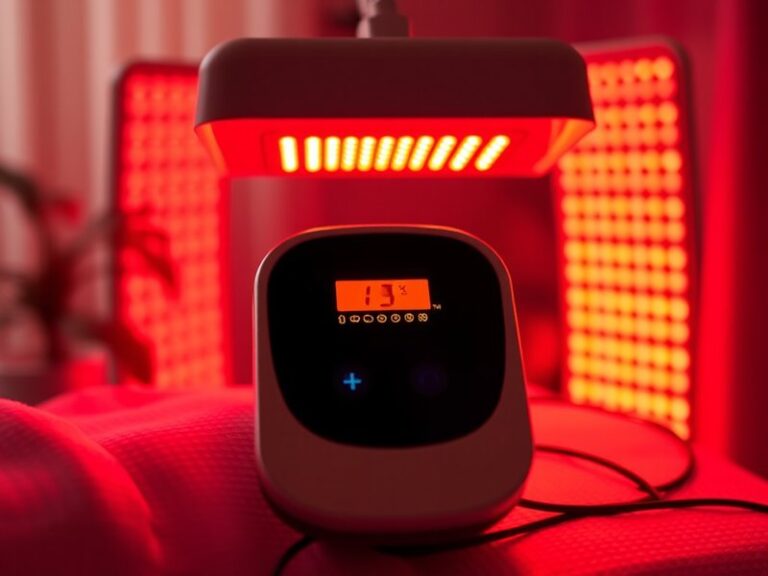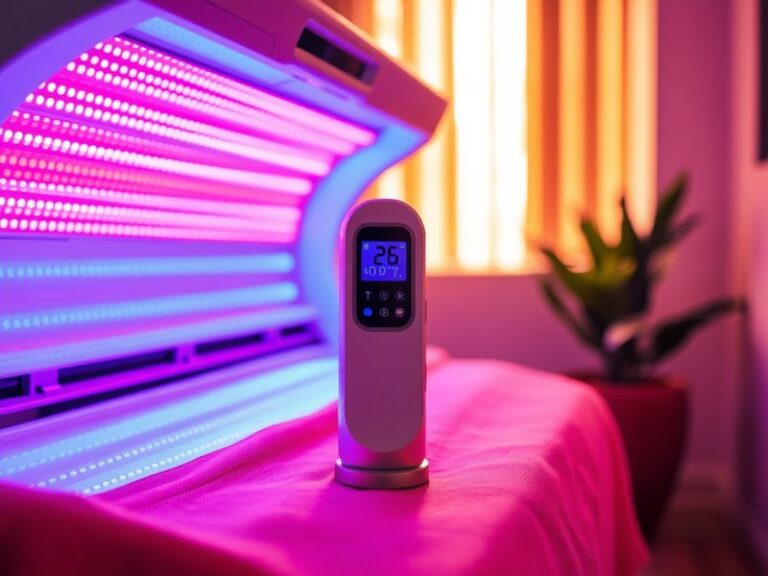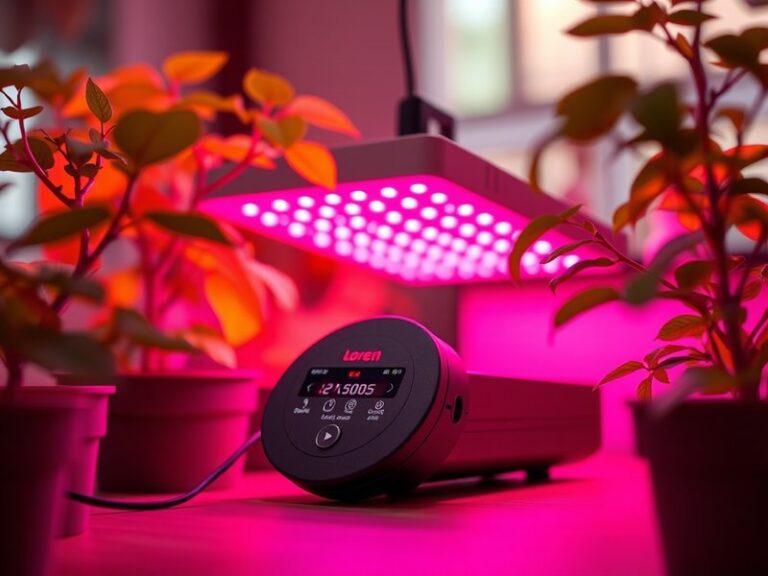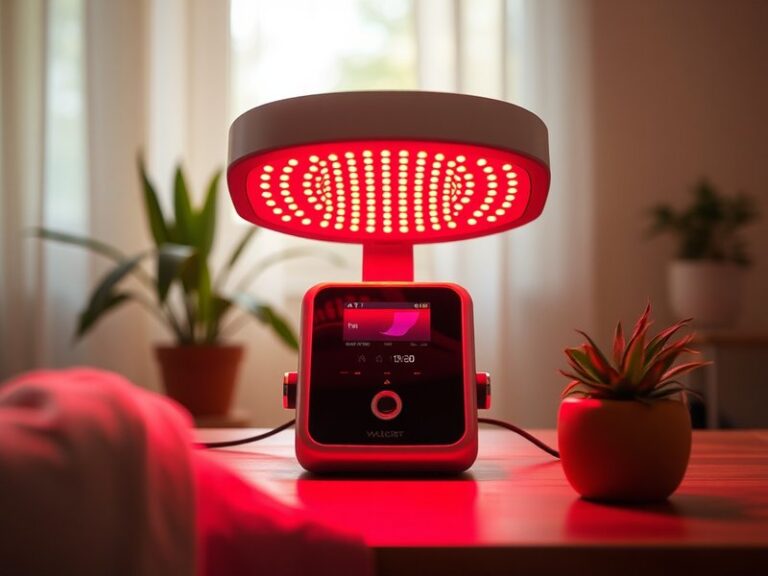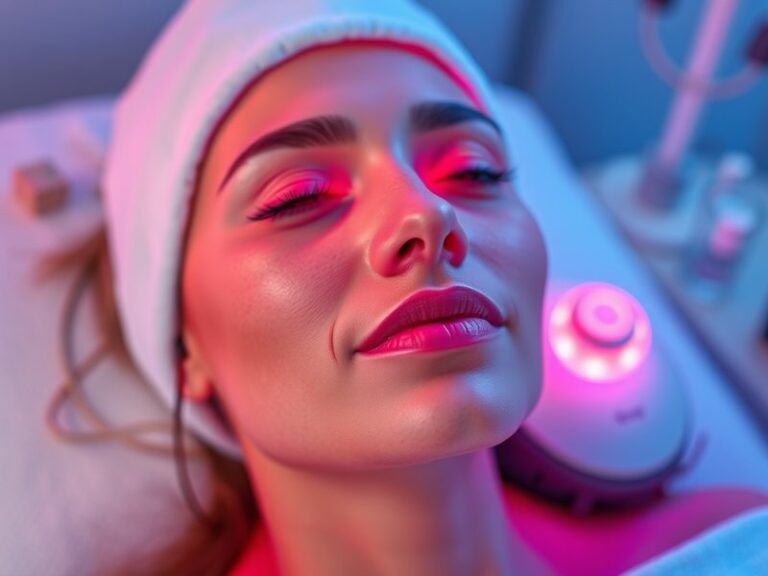Do Celebrities Use Red Light Therapy?
Do Celebrities Use Red Light Therapy?
Have you ever wondered how celebrities maintain their radiant, youthful appearance? Among a plethora of beauty treatments, red light therapy has emerged as a popular choice in their wellness routines. This article explores the rising trend of red light therapy among celebrities, examining its benefits, considerations, and alternatives available to those looking to harness this technology.
Key Takeaways
- Red light therapy is a non-invasive treatment used for skin rejuvenation and healing.
- Many celebrities reportedly use red light therapy to enhance their skin health and reduce signs of aging.
- Considerations before starting this therapy include consultation with a healthcare professional and understanding personal skin types.
What is Red Light Therapy?
Red light therapy (RLT) is a treatment that exposes the skin to low levels of red or near-infrared light. It stimulates the body’s natural healing processes and offers a variety of potential benefits for skin health, muscle recovery, and overall well-being.
Originally developed for wound healing by NASA, red light therapy is now widely used in both clinical and home settings. Devices range in size from large panels to handheld units, making it accessible for personal use.
The mechanism behind RLT involves the absorption of light by the mitochondria in cells, thereby enhancing cellular energy production (ATP), which propels healing and rejuvenation.
What are the Benefits of Red Light Therapy?
The following points delve deeper into the advantages of red light therapy, illustrating why it has become a favored treatment among celebrities and wellness enthusiasts alike.
Skin Rejuvenation and Anti-Aging
Red light therapy is celebrated for its ability to reduce fine lines, wrinkles, and other signs of aging. By stimulating collagen production, it helps improve skin texture and elasticity. For example, many celebrities like Jessica Alba and kylie Jenner attribute part of their glowing skin to consistent red light therapy treatments.
Accelerated Healing and Recovery
Athletes and fitness enthusiasts, including celebrities like LeBron James, use red light therapy to aid in muscle recovery and reduce inflammation. Research shows that RLT can enhance recovery times from exercise by promoting better circulation and reducing oxidative stress on tissues.
Improved Mood and Sleep Quality
Numerous studies suggest that exposure to red light can improve sleep quality and mood stabilization. Celebrities like Jennifer Aniston openly discuss the mental health benefits they gain from red light therapy, as it can help combat stress and enhance cognitive function.
Additional Benefits
RLT has potential applications in treating conditions like acne and psoriasis, demonstrating its versatility as a skincare treatment. Some users have reported improved hair growth, making it a promising option for individuals experiencing hair thinning or loss.
Is it Possible to Incorporate Red Light Therapy into Your Routine?
Incorporating red light therapy into your daily or weekly wellness routine is quite feasible. Many people use at-home devices within the comfort of their homes, while others may seek professional treatments at wellness or dermatology clinics.
What are the Advantages of At-Home Red Light Therapy?
Using red light therapy at home offers numerous conveniences:
- Cost-Effective: Investing in a device can save money over time compared to repeated clinic visits.
- Flexibility: Users can schedule treatments at their convenience, fitting them into their busy lifestyles.
- Comfort: Many prefer the privacy and comfort of using devices at home rather than undergoing treatments in public spaces.
What are the Disadvantages of At-Home Red Light Therapy?
While at-home use presents advantages, it does come with challenges:
- Effectiveness Variation: Not all devices provide the same intensity or wavelength of light, which can affect treatment results.
- Lack of Professional Guidance: Without professional supervision, users may not achieve optimal results or correctly assess their skin conditions.
- Time Commitment: At-home treatments generally require consistent effort and time, which some may find difficult to maintain.
What are the Things to Consider Before Trying Red Light Therapy?
Before embarking on a red light therapy regimen, several factors warrant consideration to ensure safe and effective use.
Skin Type and Conditions
Individuals should consider their skin type and any existing conditions, as the therapy may have varied results for different skin types. Consulting with a dermatologist can help tailor the treatment to individual needs.
Device Quality
Selecting high-quality devices is crucial. Users should research brands, reading reviews and understanding the science behind the device’s technology to ensure efficacy.
Consistency and Duration of Treatment
Results may not be immediate, as many benefits emerge from consistent use over time. Establishing a treating schedule and adhering to it will enhance the effectiveness of red light therapy.
Explore the topic in Duration of Red Light Therapy Results?
Additional Considerations
- Check if you have any contraindications, such as specific medications or health issues that may interfere with light exposure.
- Stay informed about new studies and advancements related to red light therapy to maximize its benefits.
What are the Alternatives to Red Light Therapy?
While red light therapy has garnered attention, several alternative treatments can also promote skin health and wellness.
Laser Treatments
Laser therapies, including fractional lasers and ablative lasers, can target specific skin issues like scars and pigmentation. While often more invasive, they may offer immediate results, albeit with a longer recovery time.
Microdermabrasion
Microdermabrasion is a non-invasive procedure that exfoliates the outer layer of skin, promoting renewal and improving overall texture. It’s a great alternative for acne scars or dull skin without the downtime associated with more invasive treatments.
Chemical Peels
Chemical peels involve applying acidic solutions to the skin, which exfoliates dead skin cells and stimulates new skin growth. This can correct issues like discoloration and fine lines but usually requires recovery time based on the depth of the peel.
Additional Alternatives
- LED Masks: Similar to red light therapy, LED masks can be used for specific conditions, including acne and pigmentation, providing multiple light color benefits.
- Topical Treatments: Creams and serums infused with ingredients like retinol and hyaluronic acid can also improve skin health and are often recommended for home skincare routines.
Conclusion: Is it Recommended to Try Red Light Therapy?
Red light therapy presents a promising, non-invasive option for those seeking to improve their skin health and overall well-being. With numerous celebrities endorsing its benefits, it’s clear that this therapy has value in today’s wellness landscape. However, potential users should consider their individual needs, lifestyle, and consult with healthcare professionals to maximize the benefits of red light therapy.
Frequently Asked Questions
What types of devices are used for red light therapy?
Devices range from handheld units to large panels. Many users opt for home devices that need to be FDA-cleared for safety and effectiveness.
How long does each red light therapy session typically last?
Most sessions last between 10 to 20 minutes, depending on the device and treatment goals.
Is red light therapy safe for all skin types?
Generally, red light therapy is safe for all skin types. However, consultation with a dermatologist is recommended to tailor treatment to personal skin conditions.
Find our take on Does Red Light Therapy Kill Scabies?
How frequently should I use red light therapy for results?
Most experts recommend 3-5 sessions per week for optimal results, with adjustments made based on individual skin response.
Can I combine red light therapy with other treatments?
Yes, many people combine red light therapy with other treatments, but it’s important to discuss your plans with a healthcare provider to ensure compatibility and safety.

